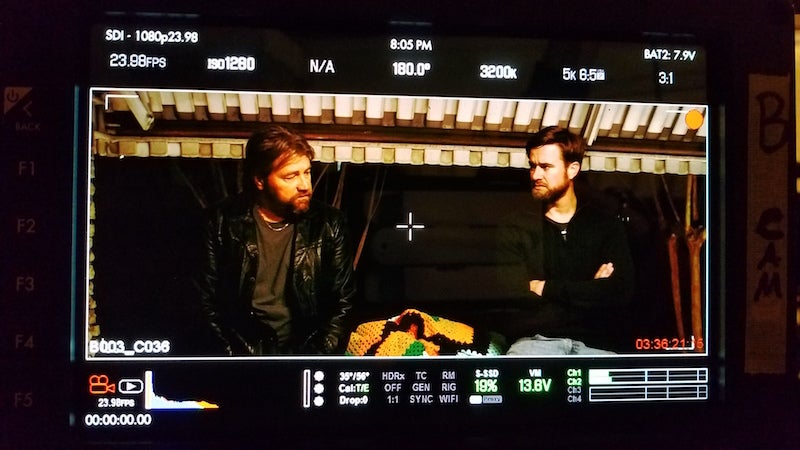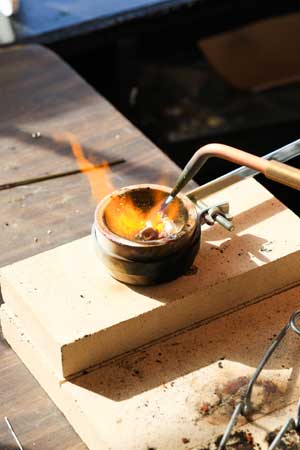Photos Contributed
On average 17.2 veteran suicides a day took place in 2019, and a new narrative film is putting faces to the stories behind them. Steve Moon, a film producer with 20 years of experience who calls Hoover home, has talked to countless veterans and had them consult on the story of Out of the Fight, which can now be streamed on Hulu, Amazon Prime, YouTube, iTunes and Voodoo. Everything you see in the movie is based on actual events, Steve is quick to note too. We talked with him this fall to learn more about the film, its story and its impact.
What’s the back story on the film?
I was friends with Judy Norton from the TV show The Waltons, and I talked to her about a script about veteran suicide. I know a lot of veterans, and there is suicide in my family. I met a woman named Jan in Denver who was a huge supporter of veterans and who introduced me to a lot of veterans support groups. I ended up meeting with 200 families, and they started telling me their stories of their spouse or son or daughter who committed suicide. It was never one single event that led to it. They all could not adapt to life back in the States based on everything they had seen on one or two or three or four tours of duty. We put together a script and showed it to the Army, Marines and Navy spokespeople, and they said they would love to see it developed.
Where did the title come from?
My wife came up with the name. I called it After War since they are no longer in it, and she said “How about Out of the Fight?” We watched a series called SEAL Team where they say “C’mon, buddy. You are not out of the fight,” so we realized it’s military language too.
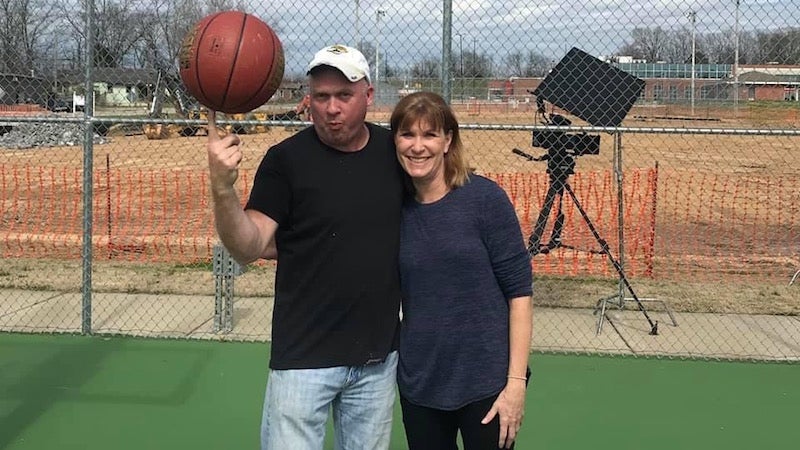
Steve Moon with Judy Norton from The Waltons
What impact are you seeing the film make?
It’s making a huge impact in veteran communities. There are 55 VAs, and in all 55 they want to show my film to veterans and their families because it offers them a sense of a hope and is told in such a non-Hollywood style. It’s real and it’s honest, and it shows how the effects of PTSD and depression. We are getting so many responses where people are saying thank you for telling this story. The biggest thing is these families want to make it not taboo, so that it’s okay to have the depression and to get help. It could be that one day nothing is wrong and then something triggers the depression. I think the movie captures that because looking back all these families say they could not have prevented it.
What have you learned in making this film?
Depression is depression is depression. Whether through a divorce or seeing members of your unit get killed or communities that are devastated by war, it’s whatever you have gone through. It’s never one trigger, though you may have trigger moments. We are all humans. You can come home and have a wife or husband who can’t imagine what you went through but they can be there for you. You don’t cheer up. The opposite of depression is not happiness. It’s survivability. If you have a support group or a spouse or kids or parent, you can get through it. It’s just a challenge. The thing all of those battling depression coming out of military service have in common is they all have a servant’s heart and they feel like they don’t have a place to serve and belong. It’s important that they can start serving again so they have an identity again.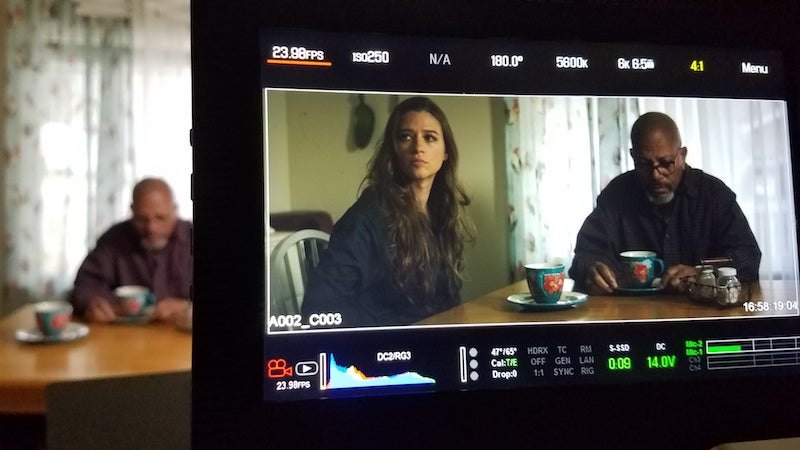
How did you work with veterans to ensure the accuracy of the film?
When we were shooting all of the battle scenes, I brought in a group of combat veterans from Mississippi to direct them. We had researched on YouTube videos of GoPro videos from combat scenes. I told them to do what they would normally be doing in these combat situations. We didn’t Hollywood-ize it. This is what actually happened as told by veterans and their spouses. One person who watched the film said battle scenes were great but gunfire wasn’t as loud as it should be. They had full loads with blanks, so it shows Hollywood films amplify the sounds. There’s nothing that glamorizes anything.
Can you share a synopsis of the Out of the Fight?
Here’s what I wrote that’s on IMDB: “US Army Sergeant Jason Pate returns home after several tours of duty in Afghanistan. Struggling to cope with life at home with his young wife and 5-year-old daughter, Pate finds himself in a world foreign to him. As his family suffers along with him, he decides to seek the help of a support group for returning veterans. He discovers fellow soldiers who are struggling with the same issues he is having, all the while continuing in life altering situations that affect his entire family. Ultimately, Pate finds himself in a life changing moment that will determine his fate and silences his demons—a fate that could take him out of the fight.”
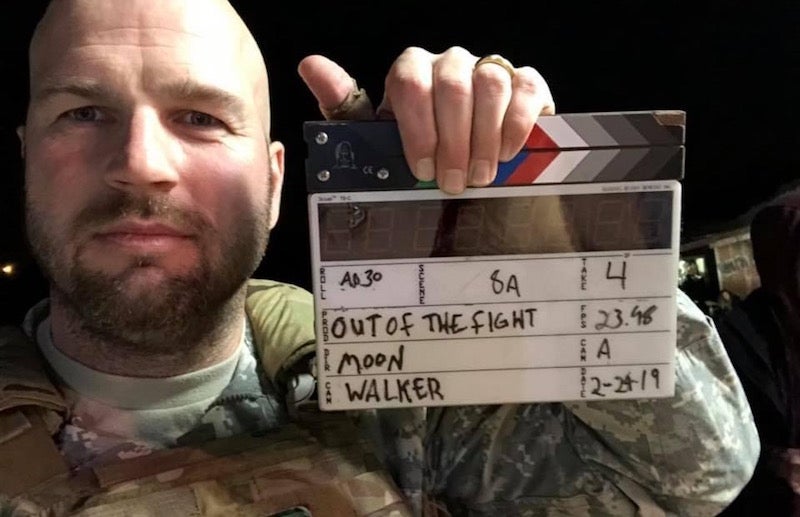 You filmed the movie in Bessemer and Hueytown. Can you talk more about the film’s Alabama ties?
You filmed the movie in Bessemer and Hueytown. Can you talk more about the film’s Alabama ties?
This was an all-Alabama crew with the exception of one person from Atlanta. I also wanted to show potential producers I bring to the state that my crew did this, and we stayed on schedule and within our budget. Hopefully the next time a producer coms to Alabama they will hire them. I wanted to build a strong film community so we can keep doing films in Alabama. We have an incredible tax incentive in Alabama to give encouragement to make films in Alabama, so between that and crew and locations, Alabama is a hot spot for film making.
What other films have you made in the state?
I just finished producing a Richard Dreyfuss movie that we shot in Hoover with an all Alabama crew, and we are looking to bring more movies to Hoover.
A friend of mine that was in Out of the Fight got a phone call from a producer of a Bruce Willis film in LA four months ago, and he want to film a Bruce Willis film in Birmingham. I put the crew together and scouted locations. We shot it all in Bessemer, and we filmed one scene in an amusement park.
Another time I got a phone call from a producer friend who asked about a dirt track race car movie, so my high school buddy and I scouted for it. The director and John Travolta liked it. They did the dirt track scenes in Talladega but everything else was in and around Bessemer and Hueytown, and our production office was the old Hueytown High School.
We are currently shooting a film called Luna in Bessemer and Hoover about werewolves. I have another big one, Bastogne, about the siege of Bastogne in World War II that we will shoot in New Mexico, Hungary or Poland that some local crew will be on.

